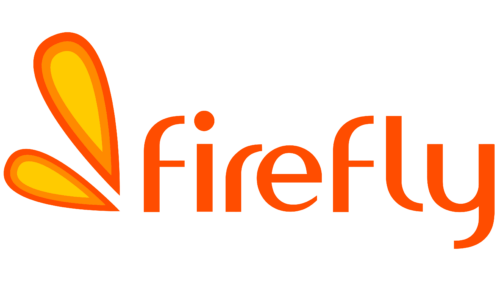The Firefly Airline logo conveys the vibrant energy that attracts today’s travelers, creating an image of an airline that prioritizes customer comfort and happiness. The logo doesn’t just represent the company; it resonates with what passengers are looking for in modern air travel – a combination of efficiency, warmth, and positivity.
Firefly Airline: Brand overview
Firefly Airline is a Malaysian budget carrier based at Sultan Abdul Aziz Shah Airport, known as Subang Airport, in Petaling Jaya near Kuala Lumpur. Established in 2007 as a subsidiary of Malaysia’s largest airline, Malaysia Airlines, Firefly was created to expand the company’s presence in the rapidly growing budget air travel market in Southeast Asia.
The airline commenced operations on April 3, 2007, initially utilizing two ATR 72-500 turboprop aircraft, each accommodating 72 passengers. The company’s first regular flights connected Penang Airport with the cities of Kota Bharu, Kuala Terengganu, and Langkawi.
The brand swiftly expanded its route network, operating flights to 10 destinations within Malaysia by the end of 2007, including popular tourist routes to Penang and Langkawi. The fleet was expanded with two additional ATR 72-500 aircraft. Aggressive growth continued in 2008-2009, as the company opened a second base at Subang Airport and launched new routes to East Malaysia and the first international routes to Phuket, Thailand, and Medan, Indonesia.
By the end of 2009, the airline’s fleet had grown to 10 ATR 72-500 aircraft. The company faced growing competition from other Malaysian budget carriers, such as AirAsia and Malindo Air.
In response, the airline shifted its focus towards reducing costs and fares, moving away from its initial “premium budget carrier” positioning. Tragically, on April 20, 2011, one of the company’s ATR 72-500 aircraft operating a flight from Penang to Kota Bharu crashed upon landing, resulting in the deaths of two crew members and two passengers, with another ten people injured. This was the first and only fatal accident in the airline’s history. The brand enhanced its safety standards following a thorough investigation and implementing corrective measures. The company continued optimizing its route network and fleet, focusing on the most profitable domestic routes and attractive tourist destinations while discontinuing some less profitable international routes.
In 2015, the company began gradually updating its fleet, receiving its first ATR 72-600 turboprop aircraft, an improved version of the ATR 72-500 with enhanced fuel efficiency and passenger comfort. This fleet modernization continued in the following years, with the company replacing the older ATR 72-500 models with the newer ATR 72-600 aircraft.
As of 2019, the company’s fleet consisted of 12 ATR 72-600 aircraft, and its route network covered over 20 destinations, primarily within Malaysia, and several international routes to neighboring countries such as Thailand, Indonesia, and Singapore.
Meaning and History
What is Firefly Airline?
Firefly Airlines, commonly referred to as Firefly, is an established budget carrier, a subsidiary of Malaysia Airlines. Since its inception in 2007, it has been providing competitive flight services within Malaysia and to a number of neighboring countries, including Indonesia, Singapore, and Thailand. The perfect balance between cost and service quality has made this airline the top choice for budget travelers in Southeast Asia and continues to contribute to its success as of 2023.
2007 – today
Firefly Airline’s logo conveys lightness and positivity. These qualities are evident in various elements: a life-affirming color palette, flowing lines, and rounded letters. First, the colors are bright – two shades of orange and yellow. Secondly, all design elements have a rounded shape. Thirdly, the lettering uses a curved font with a minimum number of sharp corners. Both “F” symbols are capitalized, marking the beginning of each part of a compound word. Thanks to the large dot, the lowercase “i” stands higher than the others, which makes it stand out among the other characters.
The bright colors are eye-catching and evoke a sense of excitement and warmth. Rounded design elements emphasize the friendly and approachable nature of the logo. The unique letter “i” gives the logo a personal touch, further emphasizing the unique character of the airline.





